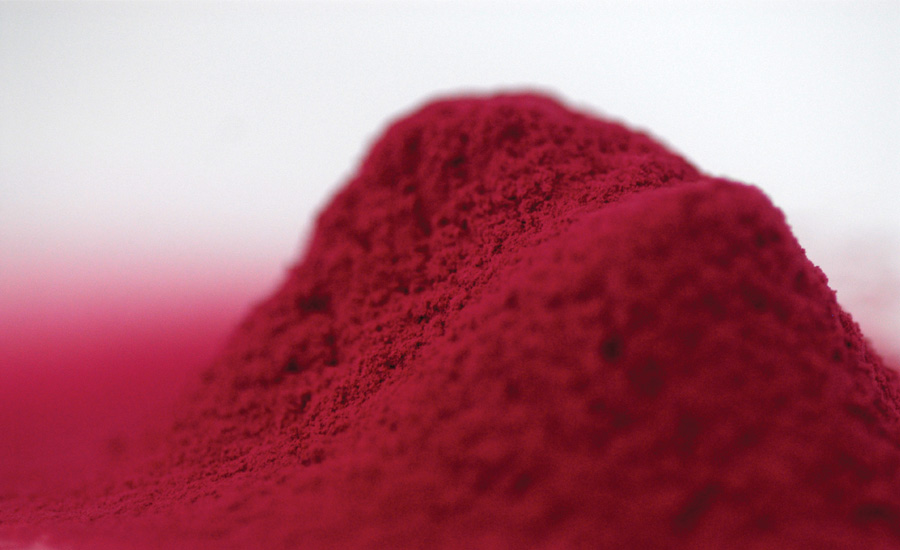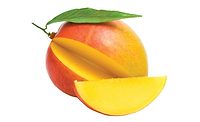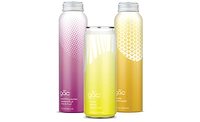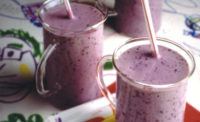Although “fabulous flavonoids” is not yet a recognizable term to many consumers, most recognize the antioxidant-rich properties and health benefits of several rich, darkly pigmented berries including blueberries, tart cherries, black currants, elderberries and aronia berries, which all fall under the flavonoids’ umbrella.
The plant-rich flavonoids are a class of compounds, or phytochemicals, under the polyphenol category that include anthocyanidins, flavan-3-ols, flavonols, flavanones, flavones and isoflavones that are not only widespread in the human diet, but are garnering interest in the food, beverage and supplement industries because of their natural red-purple colorant properties as well as their notable studied health benefits, says Melanie Bush, director of berry science at Fort Wayne, Ind.-based Artemis International.
“The biological effects of flavonoids appear to be related to their ability to influence cell signaling mechanisms influencing everything from inflammation and cardiovascular health, to gut and metabolic health, and even neuroprotective and immunomodulating activity,” Bush says. “The boom of interest in functional foods and beverages has caused formulators to start seeking out flavonoid-rich ingredients by name — with berries being one of [the] favorites.”
Although flavonoids are just beginning to be part of the discussion in the beverage industry, Artemis International President Leslie Gallo suggests that flavonoids, particularly berry flavonoids, will rise to the same level of success and recognition that probiotics and omega-3 fatty acids have had within the food and beverage industry.
“While other one-time ‘novel’ ingredients experienced major interest and appeal, they are starting to lose their unique and novel factor,” Gallo explains. “Flavonoids are now on the rise and with a name that is more appealing.”
Artemis’ portfolio includes Berryceuticals, its patented science-supported nutraceutical ingredients sourced from darkly pigmented, flavonoid-rich berries. These include elderberries, which provide immune support; tart cherries, which are a proven anti-inflammatory; blueberries, which are high in antioxidants; cranberries, which are a type of proanthocyanidins; and black currants, which support vision health.
The aronia berry has super-high levels of both anthocyanins and proanthocyanidins, two flavonoids that are linked to a wide range of potential health benefits by supporting cardiovascular and heart health, according to an Artemis infographic.
Flavonoid functionality
Also a member of the flavonoids’ family, plant-based blueberries offer functionality, are recognizable by consumers, and provide attractiveness and natural fortification in beverages, experts note. For added versatility, the superfruit can be used fresh, frozen, individually quick frozen and as a puree to add color, texture and lush taste, says Tom Payne, industry specialist for the U. S. Highbush Blueberry Council, Folsom, Calif.
“Blueberries are often classified as ‘superfruits,’ a category characterized by a variety of phytonutrients; however, many contain high amounts of flavonoids such as anthocyanins, which give blueberries their deep color and also provide antioxidant and anti-inflammatory activity,” Payne says.
Among the beverage categories that are a functional fit for blueberries are blueberry teas, smoothies, pourable yogurts, drinkable desserts, juice drinks, sports drinks and fiber drinks, which are increasing in popularity, Payne says.
“Fiber drinks work well with blueberries, which make the drinks a delicious way to get natural antioxidants. In addition to tasting good, fiber beverages that contain blueberries can be positioned as real food containing natural antioxidants, not synthetic elements manufactured in a lab,” Payne explains. “With whole food plant sources like blueberries, beverages supply natural antioxidants and other beneficial nutrients from the plants, which are most efficiently absorbed by the body.”
‘Eating your colors’
Experts note that some flavonoid compounds are dominating the marketplace more than others. For example, the anthocyanin subgroup is comprised of the red-purple color pigments that give berries their vibrant colors.
“Multiple marketing campaigns are centered [on] ‘eating your colors’ to associate the ‘healthy qualities’ of these colorful compounds,” Artemis’ Bush says. “Berries as ingredients are the champions of the anthocyanin category because they can easily formulate into multiple products and beverages from a flavor, familiarity, and health benefit value-added standpoint. Other flavonoids that are becoming more familiar in the marketplace include proanthocyanidins (also known as PACs), perhaps most commonly associated with cranberry products and their effects on urinary tract health.
“Formulators are also now starting to ask about catechins and epicatechins as some of the flavonoid actives in ingredients like green tea, cocoa products and berries that are contributing to antioxidant and other health benefits in these foods,” she continues. “Flavonols are another category of flavonoids that should continue to be watched as the compounds like quercetin, found in foods like kale and broccoli, try to crossover from the dietary supplement realm into functional food/beverages.”
Not only are flavonoids studied for more general health properties like overall wellness or antioxidant status, specific flavonoids have been associated with specific therapeutic effects to benefit certain conditions, Bush says. For example, the anthocyanins in elderberry have been linked to potent immune-promoting activities while the flavonoids in aronia berry have caused it to emerge as the “heart-health berry.”
The U.S. Highbush Blueberry Council’s Payne notes that blueberries are the subject of ongoing research in relation to the dietary intake of berries and flavonoids to aid in healthy aging and helping to prevent cognitive decline.
As consumers continue to search for natural, targeted health-promoting ingredients in their food and beverage choices, great-tasting flavonoid-rich ingredients like berries are an easy solution, experts say.
Despite the health benefits associated with flavonoids, the everyday consumer’s connection with the nutrient family has not entered the vernacular. However, consumer education can help bring these ingredients to the forefront, Artemis’ Gallo says.
“Certainly, products like red wine and blueberries introduced consumers (and the trade) to the colorful world of flavonoids, often more broadly described as polyphenols,” Gallo explains. “The real impact of flavonoid functionality lies ahead as the world of phytochemicals, now commonly referred to as phytonutrients, joins, and assumes, center stage over the more traditional macro and micro nutrients.”
Blueberry wine also provides a complex taste combination of sweet and tart and provides a “significantly higher antioxidant activity” when compared with many other wine products, the Blueberry Council’s Payne says. “Phytochemicals, including anthocyanins, flavonoids and catechins, are effectively transferred from the juice, skins, or seeds into the wine during fermentation,” he adds.
Through its Berryceuticals’ ingredients, Artemis offers berry ingredients in a variety of formulation-friendly formats including powdered extracts, liquid concentrates, juice powders, extract blends and fruit fibers. These berry ingredients are water-soluble and well-suited for beverages of all types, the company says. As an added benefit, the anthocyanin component of flavonoids provide natural colorants in the red-purple color range, it adds.
“This is a great added benefit for a beverage that will utilize an elderberry powder for immune support functionality as well as benefit from a deep rich red color without the need to add artificial colorants, however, it will require R&D to work with pH levels and other variables to alter the natural deep red hue,” Bush says.
Artemis’ Gallo suggests flavonoids — and the term itself — will become even more recognizable. “The knowledge and understanding of flavonoids will be on a fast track in the next three years as food and beverage products seek out ways to make their product either ‘better for you’ or ‘good for you,’” she says. “Let’s figure out the most expansive healthy role that flavonoid ingredients can play in people’s lives … and of course be delivered in a bevy of [consumer packed goods] (CPG) ‘flavonoid fortified’ products.” BI




